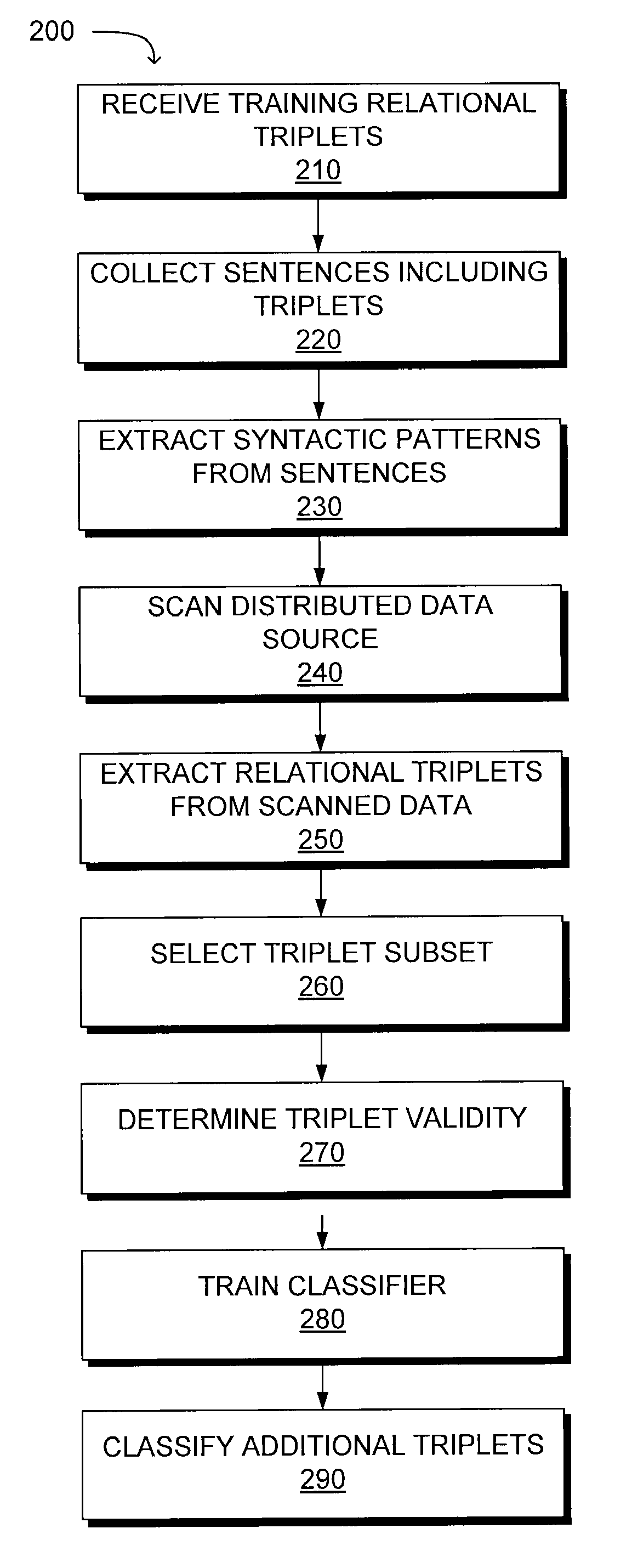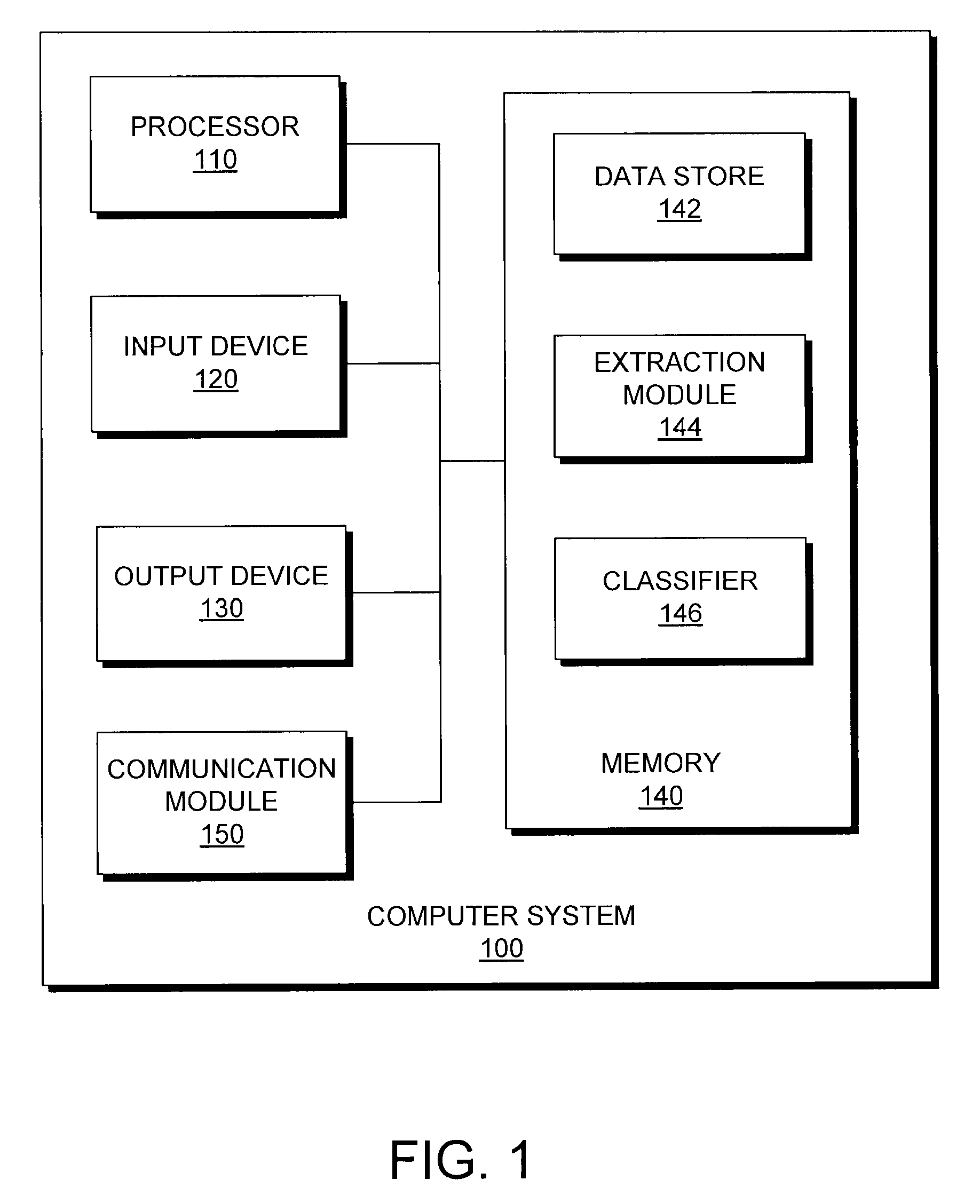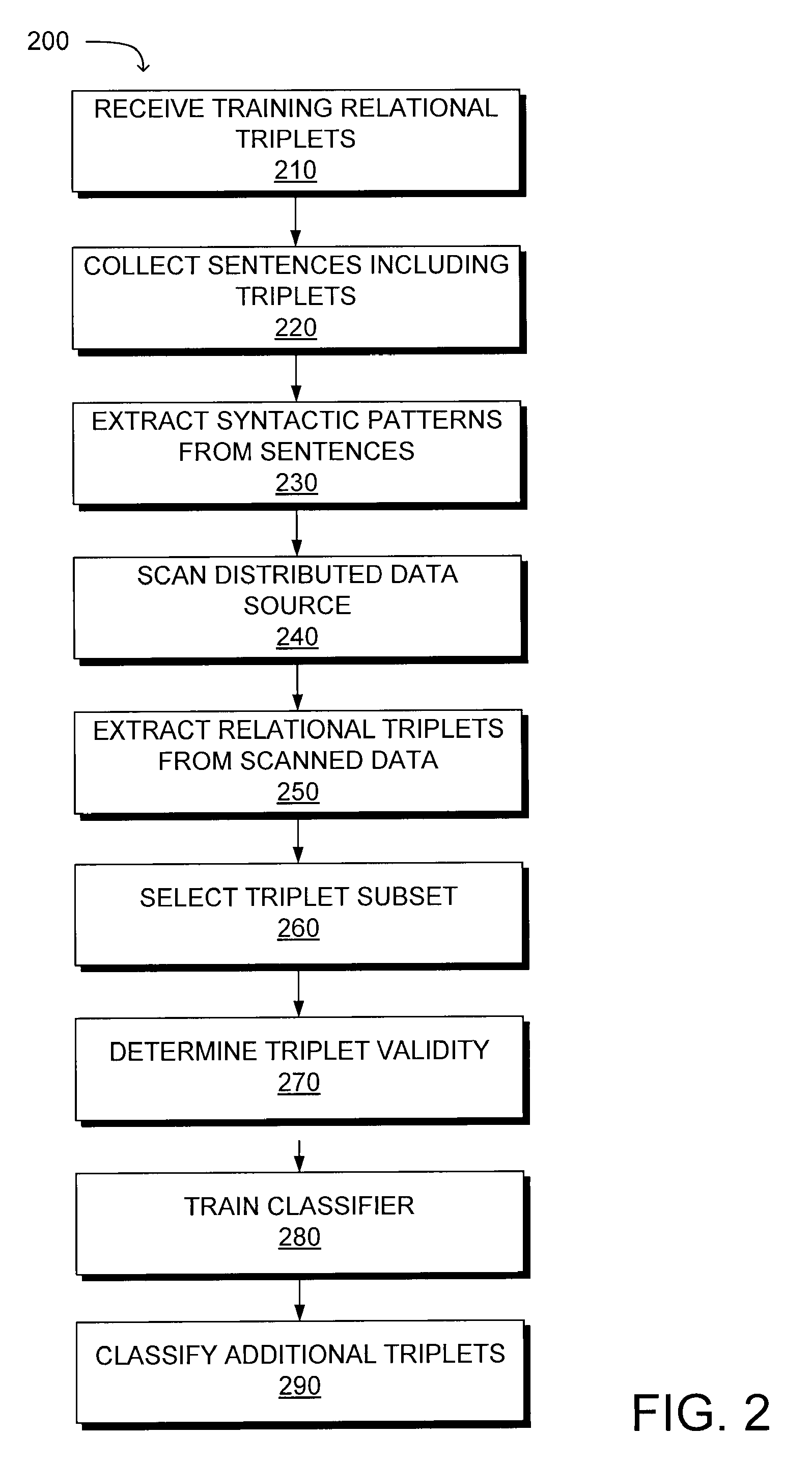Learning syntactic patterns for automatic discovery of causal relations from text
a syntactic pattern and automatic discovery technology, applied in the field of machine learning, can solve the problems of inability to provide a continuous stream of data, inability to scale up conventional data collection methods, and limited techniques for acquiring cause-effect relationships
- Summary
- Abstract
- Description
- Claims
- Application Information
AI Technical Summary
Benefits of technology
Problems solved by technology
Method used
Image
Examples
Embodiment Construction
[0015]A preferred embodiment of the present invention is now described with reference to the Figures where like reference numbers indicate identical or functionally similar elements. Also in the Figures, the left most digit of each reference number corresponds to the Figure in which the reference number is first used.
[0016]Reference in the specification to “one embodiment” or to “an embodiment” means that a particular feature, structure or characteristic described in connection with the embodiments is included in at least one embodiment of the invention. The appearances of the phrase “in one embodiment” in various places in the specification are not necessarily all referring to the same embodiment.
[0017]Some portions of the detailed description that follows are presented in terms of algorithms and symbolic representations of operations on data bits within a computer memory. These algorithmic descriptions and representations are the means used by those skilled in the data processing ...
PUM
 Login to View More
Login to View More Abstract
Description
Claims
Application Information
 Login to View More
Login to View More - R&D
- Intellectual Property
- Life Sciences
- Materials
- Tech Scout
- Unparalleled Data Quality
- Higher Quality Content
- 60% Fewer Hallucinations
Browse by: Latest US Patents, China's latest patents, Technical Efficacy Thesaurus, Application Domain, Technology Topic, Popular Technical Reports.
© 2025 PatSnap. All rights reserved.Legal|Privacy policy|Modern Slavery Act Transparency Statement|Sitemap|About US| Contact US: help@patsnap.com



